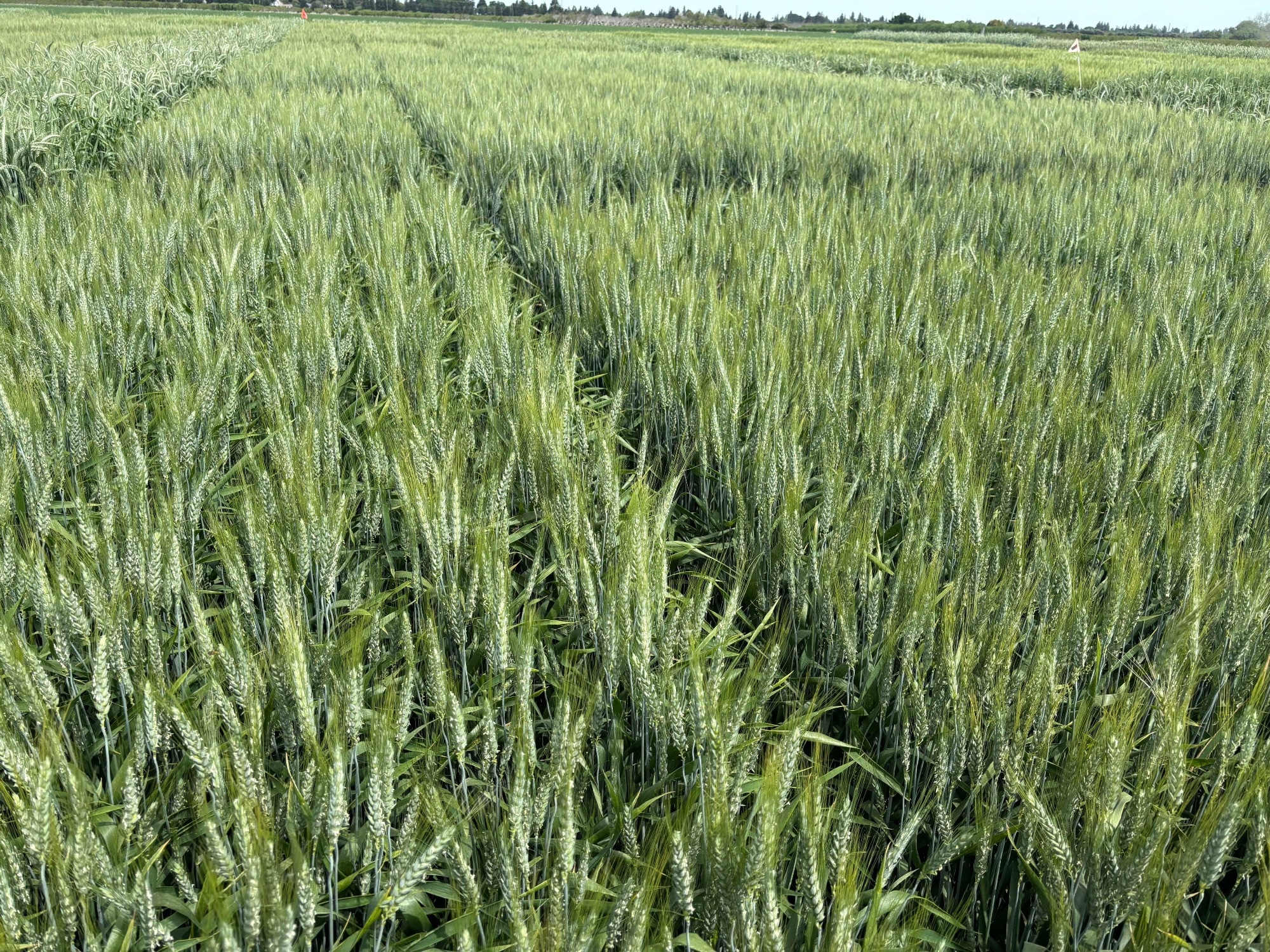Reviewed by Lexie CornerMay 6 2025
Wheat is a major global source of calories, carbohydrates, and protein. Its gluten proteins give bread and pasta their characteristic texture and elasticity, but for some, they can also trigger autoimmune conditions like celiac disease, which is becoming more common worldwide.
 Wheat with reduced allergenicity growing at the UC Davis Agronomy Field Headquarters. Image Credit: Jorge Dubcovsky / University of California, Davis
Wheat with reduced allergenicity growing at the UC Davis Agronomy Field Headquarters. Image Credit: Jorge Dubcovsky / University of California, Davis
Researchers at the University of California, Davis, have successfully deleted a group of genes that produce gluten proteins known to trigger immune reactions, while preserving the breadmaking qualities of wheat.
The results, published in Theoretical and Applied Genetics, don’t yet result in a wheat variety safe for people with celiac disease. However, they represent a key step forward in celiac research, said lead author Maria Rottersman, a doctoral student in plant biology in the lab of wheat geneticist Jorge Dubcovsky.
The gluten proteins we eliminated are the ones that trigger the strongest response in people with celiac disease, and their elimination can reduce the risk of triggering the disease in people without celiac disease.
Jorge Dubcovsky, Wheat Geneticist, University of California, Davis
Gluten consists of two main types of proteins, glutenins and gliadins, and removing all of them would compromise bread quality. The research team employed gamma radiation to specifically target and eliminate alpha-gliadins, which can provoke severe reactions in individuals with celiac disease.
Wheat is a staple crop, and many people are reliant on it for calories. It becomes a barrier when people are not able to safely eat wheat. Alpha-gliadins are definitely candidates for removal in terms of trying to create a less allergenic wheat.
Maria Rottersman, Study Lead Author, University of California, Davis
On the Market
The team tested the quality of the wheat and dough at the California Wheat Commission’s quality lab after producing seeds from the modified lines. To ensure broad access, the breeding lines have been deposited in the Germplasm Resources Information Network (GRIN), maintained by the USDA Agricultural Research Service.
The exciting thing that we found is that the quality of the flour produced by this wheat is actually, in some cases, improved. Growers can not only grow it but can expect to have a higher quality product, which I think is a huge incentive for folks to widely adopt this variety. They can be planted in the same way that normal wheat is planted.
Maria Rottersman, Study Lead Author, University of California, Davis
Source:
Journal reference:
Rottersman, M. G., et al. (2025) Deletion of wheat alpha-gliadins from chromosome 6D improves gluten strength and reduces immunodominant celiac disease epitopes. Theoretical and Applied Genetics. doi.org/10.1007/s00122-025-04882-3.